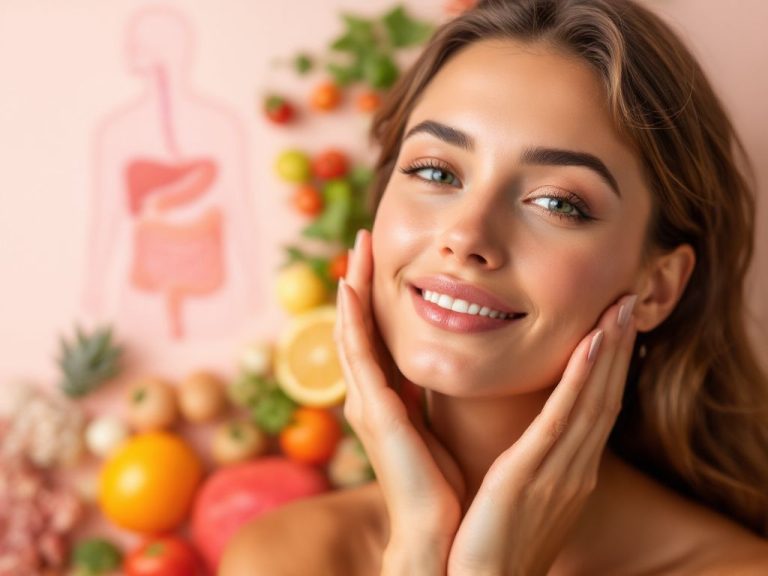Picture this: You’re scrolling through Instagram and see a friend, glowing with radiant skin, raving about the keto diet. You’re sold. A few web searches and hashtags later, you’re ready to dive into the world of high fats and low carbs with the expectation of not just losing weight, but maybe gaining some of that same skin vitality. But how does this low-carb lifestyle really affect your skin? Buckle up, because I’ve got the scoop on all things keto skin effects.
Table of Contents
ToggleUnderstanding the Keto Diet
Alright, before we dive deep into the face stuff, let’s get on the same page about what this diet entails. The ketogenic diet, or keto for short, is one where you replace carbs with fats. Yep, instead of getting your energy from bread and pasta, you rely on foods like avocado, cheese, and butter. This shift pushes your body into ketosis, a state where it burns fat for fuel instead of glucose.
Here’s a quick rundown:
- High Fats: 70-80%
- Moderate Proteins: 10-20%
- Low Carbs: 5-10%
Why do people love it? Mostly for the weight loss benefits and improved energy. But does that ‘burning fat as fuel’ translate into dazzling skin? Let’s investigate.
The Connection Between Diet and Skin
We’ve all heard that old chestnut “you are what you eat.” It’s as true for your complexion as it is for your waistline. Skin reflects your internal health, so when you switch up your diet to something extreme like keto, it can have surprising skin effects. Here’s how it goes.
Good Fats and Your Skin’s Glow

Let’s talk fat. Healthy fats are crucial for well-nourished, hydrated skin. They help retain moisture and strengthen the skin barrier. As you’re eating lots of avocados and nuts on the keto diet, all that healthy fat might just make your skin more supple.
Omega-3 and Omega-6 fatty acids, found in foods like fish and flaxseeds, have anti-inflammatory properties that are significant in reducing skin irritation. This is where you might notice an improvement in conditions like eczema or acne, especially if those irritated, angry flare-ups were fueled by a diet high in inflammatory sugars and refined carbs.
Carbs, Insulin, and Acne
Now, there’s a flip side with reducing carbohydrates. Lowering your carb intake lowers insulin levels, and insulin spikes are a well-known catalyst for acne breakouts. Less insulin generally means less sebum production, which can prevent those unwelcome pimples from showing up. So for some people, cutting carbs can clear things up quite literally.
Detoxing Initial Breakouts
But wait, before you celebrate your new clear skin, there’s something you should know. Many keto newcomers report initial breakouts. Think of this as a diet detox phase where your body is adjusting to burning fat. This could disrupt your hormones and, voila, there you have it—breakouts. But give it some time and things usually even out.
What to Expect: From Transition To Transformation
The Initial Phase: Bumpy Road Ahead?
Not gonna lie here… starting keto might come with rocky patches. You’ll probably go through the notorious “keto flu,” which can make you feel icky for a week or so as your body switches gears metabolically. Meanwhile, your skin might reflect some of that metabolic confusion with some initial breakout action. Annoying? Sure, but stick with it.
Here’s a little heads-up list of what your skin might experience:
- Breakouts: Initial acne flare-ups as your hormone levels adjust.
- Dryness: Temporary skin dryness due to reduced electrolyte levels.
- Oiliness: Increased sebum production as a reaction to the new diet.
Moving Forward: The Glow-Up

Rest assured, as you stay on track, things should gradually improve. A balanced keto diet fosters overall health, improving skin texture, clarity, and maintaining elasticity. Make sure to balance your electrolytes with enough sodium and potassium, which will counter any excessive dryness. Think of the adjustment like clearing out your closet; it might get messy before you’ve perfectly curated order.
Keto-Friendly Skincare Tips
As you embark on the keto journey, consider redesigning your skincare routine to adapt to your new lifestyle.
- Hydration is Key: Water is your best buddy. Lots of it will help flush toxins through your system and keep skin hydrated.
- Include Omega-3 Rich Foods: Flaxseeds, chia seeds, walnuts. Particularly if you’re a seafood avoider. These will help in maintaining that skin glow.
- Gentle Cleansing: Opt for mild cleansers that won’t stripped your skin barrier.
- Moisturize Generously: A good, non-comedogenic moisturizer will do wonders in maintaining hydration.
- 5. **Avoid Harsh Exfoliants: During the initial transition, steer clear of harsh scrubs which might aggravate breakouts.
Possible Side Effects and Must-Knows
While it’s tempting to focus only on the amazing results, no discussion would be complete without a few cautionary notes. Here are some potential side effects of your new keto lifestyle impacting your skin:

- Potential Micronutrient Deficiencies: A restrictive diet may keep you from getting enough vitamins and minerals, essential for skin health. Foods rich in vitamins A, C, and E like colorful veggies should remain a priority even in low-carb forms.
- Keto Rash: Some face a condition nicknamed keto rash, or prurigo pigmentosa, with itchy, red skin associated with keto. While not terribly common, it’s good to recognize and consult your doctor if it occurs.
- Long-term Follow Up: Always be sure you’re on the right path diet-wise with regular check-ups and blood tests to ensure balance and health.
Comparing Keto with Other Diets for Skin Health
Keto vs Low-Carb Diet
So, you’re wondering if all low-carb diets result in stunning skin transformations or if keto has the edge? In essence, the effects on skin between low-carb eating and keto aren’t vastly different, as both can help stabilize blood sugar levels and, by extension, insulin spikes, reducing acne risks. However, with keto, the higher fat intake optimizes skin hydration and texture more noticeably.
Keto vs High-Carb Diets
In contrast, a diet high in carbs can often cause more skin issues like acne due to insulin spike frequency leading to increased sebum production. Also, sugar-induced glycation can speed up aging signs such as wrinkles, so moderate to low-carb intakes (like with keto) might slow premature aging.
Final Thoughts on Embracing Keto for Skin Health
Hey, it’s worth trying if you’re already on the quest to lose some pounds and exploring food-energy relationships more intimately. Engraving keto into your lifestyle might take some patience especially with initial symptoms and skin adjustments, but dedication often leads to rewarding glow-ups in skin health too. Trust this body fuel-renewal process, peppered with more hydration, wholesome oils, and moderate, thoughtful inclusion of nutrients.
Keep tabs on how your skin responds, enjoy the diet changes, and know when it’s time to seek expert advice if things seem off. Keto can very well be your diet’s love letter to your skin, bringing about more than just weight loss but a tangible, enviably energetic, healthy glow.
Frequently Asked Questions
How can the keto diet affect my skin?
The keto diet can have both positive and negative effects on your skin. On the positive side, it can help reduce skin conditions like acne and dermatitis by reducing inflammation. However, it can also lead to increased sebum production, which can feed bacteria that cause acne. Additionally, some people may experience skin rashes, including the “keto rash” or prurigo pigmentosa, an itchy and inflammatory condition[2][4][5>.
What is the “keto rash” and how is it treated?
The “keto rash,” medically known as prurigo pigmentosa, is a rare side effect of the keto diet characterized by itchy, red, raised bumps typically on the neck, trunk, and other areas. The exact cause is unclear, but it is associated with ketotic metabolic states. Treatment often involves antibiotics, and it is advised to consult a dermatologist promptly to prevent permanent dark spots[2][4][5>.
Can the keto diet help with skin inflammation and conditions like psoriasis?
While the keto diet may help some people with skin inflammation by reducing simple carbohydrates and sugars, it can exacerbate conditions like psoriasis in others. High-fat keto diets, especially those rich in medium-chain triglycerides (MCTs) and omega-3 fatty acids, may worsen skin inflammation. A balanced keto diet with long-chain triglycerides (LCTs) is less likely to exacerbate skin inflammation[3][5>.
How can I minimize negative skin effects while on the keto diet?
To minimize negative skin effects, focus on consuming healthy fats from sources like avocados, salmon, and nuts, rather than dairy products and processed foods. Avoid saturated fats and trans fats, and ensure your diet is balanced to prevent excessive sebum production and other skin issues. Also, staying hydrated and maintaining a good skincare routine can help[2][5][1>.
References







